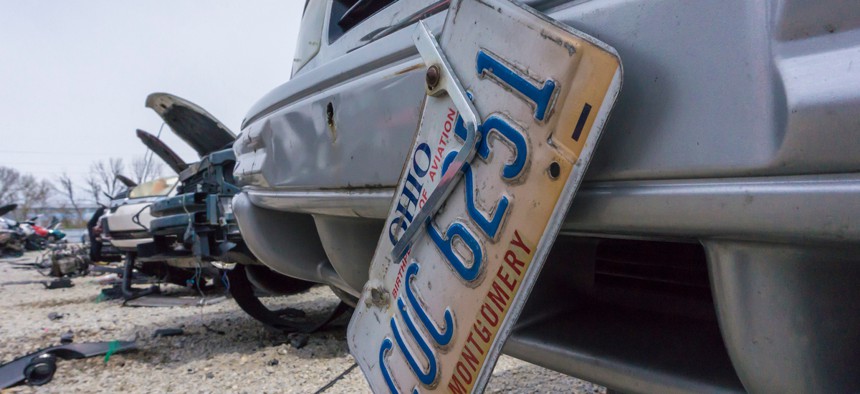Ridesharing Companies Urge Ohio to Bring Back the Front License Plate

Uber and Lyft, which both encourage customers to verify license plate numbers before climbing into cars, say the front plate is an important safety tool. Shutterstock
Uber and Lyft support a proposed bill that would require motorists in Ohio to have both a front and rear license plate. Lawmakers got rid of the front plate in April as part of a transportation budget package.
Ride-sharing companies are urging lawmakers in Ohio to reinstate a requirement that motorists display license plates on the front of their cars, saying the issue is an important safety measure for users.
“We’ve consistently found that one of our strongest tools to enhance rider safety is making sure they are getting in the right car and have the correct driver,” Kevin Kerr, a senior public policy associate for Uber, wrote in a letter this month to Ohio Senate President Larry Obhof. “This verification, part of our ‘Check Your Ride’ process, reminds riders to verify the vehicle’s license plate, its make and model, and the driver profile photo to ensure the information matches to what we shared in the app...we believe the requirement of a front license plate can create a safer environment for all users.”
Lawmakers ditched the front license plate in April as part of a sweeping transportation budget that also increased taxes on gas and diesel fuel to address crumbling infrastructure throughout the state. (Nineteen other states, including the four that share a border with Ohio, require only a rear license plate for motorists.)
Eliminating the front plate was estimated to save the state an estimated $1.4 million from making and distributing the extra plates each year, but could cause local governments to lose up to $240,000 annually in fines and court costs, according to the Ohio Legislative Service Commission. The changes take effect July 1, 2020.
The license plate measure had been introduced multiple times but always failed to gain traction in the General Assembly, largely due to objections from law enforcement officers who told legislators that the front plate was an important crime-fighting tool. Noting that concern, two Republican senators in July introduced legislation to reinstate the front plate.
Opposition to the bill has come mainly from car enthusiasts who dislike damaging their bumpers to attach a license plate and from residents who resent giving police officers two opportunities to snag license plate numbers when hunting for speeders, according to state Sen. Jay Hottinger, the legislation’s main sponsor.
“Many of our constituents believe that the only true value of a front license plate is so that the radar guns are able to be used more effectively,” Hottinger said at a press conference in July, flanked by a dozen law enforcement officers. “In reality, it is an incredible crime-fighting tool.”
It’s also important for rider safety, according to Lyft, which, like Uber, encourages its customers to verify a driver's license plate number before climbing inside the car.
“Safety is fundamental to Lyft, which is why we fully support legislative efforts to require dual license plates for all vehicles in Ohio,” said Campbell Matthews, a spokeswoman for Lyft. “The most effective way for a rider to confirm their ride is to match the license plate number shown in the Lyft app with the license plate of the arriving vehicle. By mandating front and back license plates on all vehicles, riders can more easily identify their correct ride."
The bill was referred to the Senate transportation committee in September and is awaiting a hearing.
Kate Elizabeth Queram is a Staff Correspondent for Route Fifty and is based in Washington, D.C.
NEXT STORY: Building an Enduring Foundation to Reduce Homelessness





